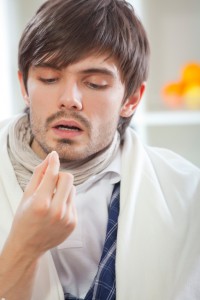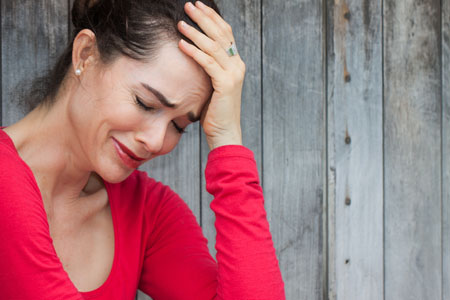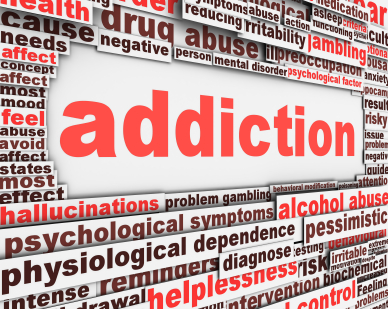Pimavanserin Prevents Relapse in Patients with Dementia-Related Psychosis

At a recent scientific meeting, Erin Foff of Acadia Pharmaceuticals Inc. described a study of pimavanserin (a selective serotonin inverse agonist/antagonist at 5-HT2A receptors) in dementia-related psychosis. Pimavanserin is currently approved in the United States for the treatment of hallucinations and delusions associated with Parkinson’s disease (PD). There is currently no Food and Drug Administration–approved treatment for dementia-related psychosis.
Enrolled patients had moderate-to-severe psychosis associated with Alzheimer’s disease, Parkinson’s, dementia with Lewy bodies, vascular dementia, or frontotemporal dementia. After a 12-week open label phase with flexible dosing and a target dosage of 34mg/day, 217 of the participants with a good response to pimavanserin were then randomized to continue pimavanserin or switch to placebo. The study was stopped early when a prespecified interim analysis revealed that pimavanserin was clearly superior to placebo. There was a more than 2.8-fold reduction in risk of relapse with pimavanserin compared to placebo in the double-blind period. Those on higher doses of 34mg/day showed a more than 3.4-fold reduced risk of relapse. Acadia will seek FDA approval for pimavanserin for the treatment of dementia-related psychosis.
Bipolar Disorder in Pregnancy and the Postpartum Period

At the 2020 meeting of the International Society for Bipolar Disorders, researcher Veerle Bergink reported several findings from a recent meta-analysis of articles on pregnancy and bipolar disorder. Bergink and colleagues found that pregnant women with bipolar disorder have a 37% risk of a postpartum relapse, more than twice the risk of postpartum mental disorders in the general population.
Using lithium as a treatment in the first trimester of pregnancy increased risk of congenital malformations in the fetus, but the risk was much smaller than previously thought and could be monitored by ultrasound.
Bergink and colleagues also reported that in a sample of 645 women with first-onset postpartum psychosis who received followup over a period of 7 to 25 years, 43% had no subsequent severe episodes outside of the postpartum period.
Another finding was that women with postpartum severe depression or mania had abnormalities in T cells, which are important in immune response.
Small Percentage of Patients Do Not Re-Respond After Stopping Lithium
 Researcher Ralph Kupka reviewed the literature on the small subgroup of patients who do well on long-term lithium treatment, stop taking the drug, suffer a relapse, and then fail to re-respond as well as they had (or, in some cases, at all) once they begin taking lithium again. These observations are supported by small case series, and appear to occur in approximately 10 to 15% of patients who stop taking lithium. Slowly tapering off lithium treatment did not seem to influence whether or not patients would re-respond to lithium later, while there was some indication that more time off lithium could lower the likelihood of a good re-response.
Researcher Ralph Kupka reviewed the literature on the small subgroup of patients who do well on long-term lithium treatment, stop taking the drug, suffer a relapse, and then fail to re-respond as well as they had (or, in some cases, at all) once they begin taking lithium again. These observations are supported by small case series, and appear to occur in approximately 10 to 15% of patients who stop taking lithium. Slowly tapering off lithium treatment did not seem to influence whether or not patients would re-respond to lithium later, while there was some indication that more time off lithium could lower the likelihood of a good re-response.
Earlier data from researcher Trisha Suppes suggested that slowly tapering off lithium treatment (over about two weeks) is superior to tapering rapidly (over a few days), and a slow taper reduced the rate of relapse. Kupka added that he would taper lithium even more slowly (over a period of one to two months) so that early signs of relapse could more readily be observed.
Disrupting Memories of Cocaine Use Might Prevent Relapse
Cocaine users who want to abstain from the drug may find that encountering people or places who remind them of past cocaine use can increase their cravings for the drug and lead to relapse. Researchers are studying animals to see if disrupting the link between an environmental cue and the memory of cocaine’s effects could reduce cravings for the drug.
In a 2016 article in the journal Neuropsychopharmacology, researcher Melissa S. Monsey and colleagues reported that in rats, the amnesia-causing natural compound garcinol can weaken the cues that lead to a cocaine-seeking. Garcinol is derived from the rind of kokum (or Garcinia indica) fruit, which is native to the west coast of India.
Monsey and colleagues delivered the garcinol during a period when the rats’ brains were reconsolidating memories that linked an environmental cue with the pleasurable effects of cocaine.
For 12 days, the rats in the study could press a lever and receive an intravenous infusion of cocaine that was paired with a light and a sound. Then the lever stopped working for 8 days. Next, the researchers observed how the rats behaved when the light and sound returned.
The light and sound were meant to remind the rats of the previous times they received cocaine, prompting their brains to reconsolidate the memory linking the light/sound with the pleasurable effects of cocaine.
Half of the rats were given an injection of garcinol during this memory reconsolidation period. While all of the rats continued to seek out cocaine, in the garcinol-treated rats, the light/sound was no longer linked to cocaine. Their cocaine-seeking behavior from then on was unrelated to the light/sound, and the link between the light/sound and cocaine could not be reinstated in these rats.
This research on rats may help clarify how cravings are produced in the brain, and how they might be prevented or treated.
Editor’s Note: In 2012, Yan-Xue Xue and colleagues reported in the journal Science that in humans, psychological techniques can be used to help a patient unlearn the association between an environmental cue and the effects of a drug, using the same theory of the memory reconsolidation period. When patients in recovery from heroin addiction were prompted to revisit memories of heroin use 10 minutes before extinction training (in which they looked at heroin or heroin paraphernalia without receiving the drug), they ended up with fewer cravings for heroin 1, 30, and 180 days later compared to patients who did extinction training without revisiting memories of past heroin use (and thus without opening the memory reconsolidation window, which researchers believe opens 5 minutes to an hour after someone engages in active recall).
Continuing Marijuana Use After a First Episode of Psychosis Increases Risk of Relapse
 A 2016 article in the journal JAMA Psychiatry reports that continuing to use cannabis after a first episode of psychosis increases risk of relapse. The study by Sagnik Bhattacharyya and colleagues employed longitudinal modeling to determine the role of cannabis use in psychotic relapse. The researchers followed 90 women and 130 men for two years after a first episode of psychosis, and found that the more marijuana they used, the more likely they were to have a relapse of psychosis.
A 2016 article in the journal JAMA Psychiatry reports that continuing to use cannabis after a first episode of psychosis increases risk of relapse. The study by Sagnik Bhattacharyya and colleagues employed longitudinal modeling to determine the role of cannabis use in psychotic relapse. The researchers followed 90 women and 130 men for two years after a first episode of psychosis, and found that the more marijuana they used, the more likely they were to have a relapse of psychosis.
Relapse rates were highest (59.1%) for participants who used pot continuously following their first episode of psychosis. Relapse rates were lower (36.0%) for those who used cannabis intermittently thereafter, and lowest (28.5%) among those who discontinued cannabis use after their first episode of psychosis.
A statistical test known as a cross-lagged analysis was used to establish that cannabis use affected later relapse, rather than relapse of psychosis leading to further cannabis use.
Another statistical strategy using fixed-effect models revealed that risk of psychotic relapse was 13% higher during times of cannabis use than during periods of no cannabis use.
These findings offer some hope that the likelihood of psychosis relapse can be reduced, since ongoing cannabis use is a risk factor that can be modified, unlike family history or genetics. Bhattacharyya and colleagues called for research into interventions that can help discourage cannabis use in people who have had a first episode of psychosis.
Editor’s Note: N-acetylcysteine, a nutritional supplement sold in health food stores, can reduce cannabis use compared to placebo in teen users.
Mood Stabilizers with Atypical Antipsychotics Reduce Relapses Compared to Mood Stabilizers Alone or with Typical Antipsychotics
An Israeli study reports that treatment with mood stabilizers and atypical antipsychotics reduces bipolar relapses compared to treatment with mood stabilizers alone or mood stabilizers combined with typical antipsychotics. The study, by Eldar Hochman and colleagues in the journal Bipolar Disorders, compared one-year hospitalization rates after patients with bipolar disorder were discharged from the hospital following a manic episode. All of the 201 discharged patients were prescribed a mood stabilizer (lithium or valproate), and some were also prescribed an antipsychotic, either atypical or typical.
Those participants who received the combination of a mood stabilizer and an atypical antipsychotic had re-hospitalization rates of 6.3% compared to 24.3% of those who received mood stabilizers alone and 20.6% of those who received mood stabilizers with a typical antipsychotic.
While the study did not determine which treatment is best for ongoing maintenance treatment of bipolar disorder, it does suggest that the combination of mood stabilizers and atypical antipsychotics can reduce hospitalizations during the one-year period following a manic episode.
Recovery and Relapse After a First Mania
The timeframe during which recovery and recurrence occur in people with a first episode of mania are somewhat variable. A meta-analysis by Andréanne Gignac and colleagues published in the Journal of Clinical Psychiatry in 2015 offers some new information. The meta-analysis included eight studies with a total of 734 participants in a first episode of mania. Syndromal recovery rates (when patients no longer met diagnostic criteria for bipolar disorder) were 77.4% at six months after first episode of mania and 84.2% at one year after. However, some symptoms lingered, and only 62.1% of patients reached a period of symptomatic recovery within one year.
Recurrence rates were 25.7% within six months, 41.0% within one year, and 59.7% by four years. Those who were younger at the time of the first episode were at higher risk for relapse within one year.
Editor’s Note: On the positive side, most recovered, but on the negative side, at one year, 60% remained symptomatic and 40% had a recurrence. What is not clear is how intensively patients were treated and monitored. The main message of this study is that a first episode of mania is not trivial and deservces concerted acute and long-term treatment. When expert multimodal treatment is given results are vastly more superior than treatment as usual (Kessing et al. British Journal of Psychiatry 2013).
Specialized Bipolar Treatment Superior to Treatment as Usual: A Randomized Controlled Study
Danish researcher Lars Kessing recently performed the first randomized controlled study of the efficacy of early intervention in bipolar disorder.
Patients who had been hospitalized for a first episode of mania were randomly assigned to two years of treatment in a specialized clinic versus two years with treatment as usual in the community (the control condition). The researchers predicted that then specialized clinic would decrease subsequent hospitalizations, and increase adherence to medication and patient satisfaction compared to treatment as usual over the subsequent six years.
Treatment at the special clinic began with a phase of post-hospitalization settling in, followed by psychoeducation (15 weeks of 1 session/week). Emphasis was placed on the recognition of breakthrough symptoms—early warning signals of an impending mood episode.
All three outcomes were better in the group who were treated at the specialized clinic than in control group who received treatment as usual. Hospitalizations were reduced 40%, medication compliance was enhanced, and patients were more satisfied. Patients younger than age 36 showed greater improvement and greater differences from the control group than were seen among older patients.
One striking observation was that the difference observed after patients had spent two years in the specialized clinic compared to the control group persisted and grew over the following four years, even though these patients left the specialized clinic after the first two years.
The specialized clinic was not only successful, but was also cost-effective. Clinic patient care led to a savings of €3,194 per patient. The costs for clinic patients were 11% of those for control patients.
Editor’s Note: We already know that treatment delay is related to poor outcome. (See article by this editor Robert Post et al. in the Journal of Clinical Psychiatry in 2010.) This study is groundbreaking in demonstrating that the quality of care in a specialized clinic has enormous personal, societal, and financial benefits, and can render the course of illness more benign over a sustained period of at least 6 years.
This means that a revolution in the care and treatment of patients with bipolar disorder is needed throughout the world, but especially in the US, where the typical treatment paradigm is as bad or worse than the treatment as usual condition in Kessing’s Danish study. When patients are discharged from the hospital, they are immediately at increased risk for relapses and, most alarmingly, at 200-fold increased risk of suicide. This post-hospitalization gap in treatment between episodes needs to be better managed. Transitional care is rarely handled well, psychoeducation is rarely given for a sufficient duration, therapy is often unavailable, and medication non-compliance is high. These factors lead to increased illness, re-hospitalizations, and skyrocketing personal and societal costs. Moreover, only 20% of bipolar patients identified in epidemiological studies in the US are in any kind of treatment.
Treatment guidelines must be changed to better address these issues. A first episode of mania should trigger a cascade of sequential treatments: Read more
Blockade of Kappa Opiate Receptors Blocks Proneness to Relapse in Addiction
George Koob, the new director of the National Institute for Alcohol Abuse and Alcoholism (NIAAA), showed that animals with extended access to self-administered abuse substances like cocaine or morphine will escalate the amount of drug they self-administer. When the drug is no longer available starting after a delay of one to two weeks, the number of times they press a lever in the presence of a cue previously associated with drug availability progressively increases over a period of one to two months (even through no drug is available). This is called incubation and reflects a measure of “craving” or relapse potential.
This incubation effect, or increasing degree of craving for a drug, is also seen clinically in people who are heavy drug users and then achieve abstinence or are incarcerated and have a period of forced abstinence. As the duration of abstinence increases, they experience an increased proneness to relapse.
Dynorphin is a psychomimetic opiate peptide that is produced in the brain and causes anxiety and dysphoria when it is given to humans. While opiates like morphine and heroin that produce euphoria and antipain effects act at a mu opiate receptor, dynorphin acts at a kappa opiate receptor. Chronic cocaine use gradually increases levels of dynorphin in the brains of addicts and also increases kappa receptors, thus converting what is often initially a euphoric drug experience into an anxiety-producing and dysphoric one.
If kappa receptors are blocked, the incubation effects during abstinence described above do not occur, and presumably addicts would be less relapse-prone. No kappa antagonist is currently available for human use, but if one combines buprenorphine (a mixed opiate agonist/antagonist) with naloxone or naltrexone (which selectively block the mu opiate receptors), one would in effect have a kappa receptor antagonist. Koob showed that this drug combination could prevent the incubation effects in abstinent animals. Further study might lead to advances in the treatment of addition in humans.
Continuation Cognitive Behavioral Therapy Prevents Relapse in Kids
At a symposium on early-onset depression at the 2013 meeting of the American Academy of Child and Adolescent Psychiatry, Graham Emslie of the University of Texas Southwestern Medical Center discussed the role of cognitive behavioral therapy in the long-term treatment of child-and adolescent-onset unipolar depression.
In Emslie’s research, the combination of the antidepressant fluoxetine and cognitive behavioral therapy reduced depressive relapses in children. Using the two treatments together did not speed onset of antidepressant response compared to fluoxetine alone, but once children responded to the medication, the addition of cognitive behavioral therapy reduced relapses over the next year compared to fluoxetine alone (even though the cognitive behavioral therapy ended after the first six months).
Emslie likened the use of cognitive behavioral therapy to the course of rehabilitation that often follows a major surgery and is meant to sustain or enhance the good effects of surgery. Getting patients to full remission (well and with no residual symptoms) was the key to staying well.







